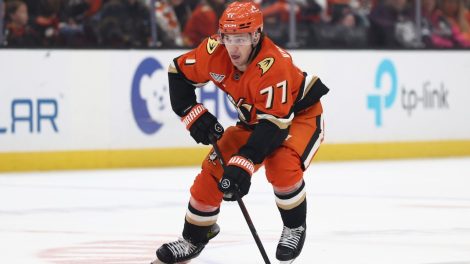TORONTO – When Brendan Shanahan started navigating his way through the Bermuda Triangle he’d built in the Toronto Maple Leafs front office, there was no way for him to keep all of Lou Lamoriello, Mark Hunter and Kyle Dubas happy.
He weighed his options and elected to hang on to his most precious resource. He named Dubas the general manager on May 11.
That left the others with a choice to make.
For Lamoriello, it meant either staying on in a powerless senior advisor role with the Leafs or finding more influence elsewhere. We should not be surprised he’s now the New York Islanders president of hockey operations – working alongside his son, Chris, and in possession of “full authority over all hockey matters with the organization.”
For Hunter, passed over in favour of a man 23 years his junior for the Leafs GM job he desperately coveted, it meant swallowing his pride or moving on. He did what many people in that situation would do. He walked out the door, potentially to rejoin Lamoriello with the Islanders once he officially ceases being a Leafs employee on July 15.
As much as Shanahan had hoped Hunter might stay, he knew it was a long shot. Those two had several conversations before agreeing to part ways.
“I think it was the road it was always going for him and I knew that going into my [GM] decision,” Shanahan said Tuesday in an interview.
[relatedlinks]
The fallout should be viewed as great news for Dubas, who now gets to make a few important choices of his own. He’s free to build the front office of his liking without the inevitable whispers about dissension inside the ranks. (For what it’s worth, those whispers were already running rampant more than a year before Dubas was elevated to the GM’s chair).
That’s not to suggest the Leafs aren’t losing something by having a Hall of Fame executive and highly regarded talent evaluator box up their offices at 40 Bay St. There’s a reason why an outside opportunity arrived immediately for Lamoriello and will almost certainly come for Hunter two months from now.
But if you’re handing over the keys to a 32-year-old with big ideas it’s not very productive to do so while having someone else’s hand on the steering wheel. Or, worse yet, trying to drive from the back seat.
The GM’s role has evolved far beyond a simple talent evaluator in today’s NHL, especially for organizations as big as the Leafs. Dubas is akin to the CEO of a company – overseeing a variety of departments, trying to keep everything on track in the big picture while trusting those below him to handle many of the important day-to-day responsibilities.
It’s a collaborative process. You need to believe implicitly that everyone’s pulling on the same rope.
The odds of that happening are more favourable with Dubas getting to fill out his own executive roster – perhaps finding larger roles for trusted colleagues Brandon Pridham, Toronto’s capologist the last four years, or Darryl Metcalf, who he’s worked closely with while heading the team’s hockey research and development department.
Shanahan indicated that he and the new GM already have an idea about what kind of workflow structure they’d like the new front office to take on. But they’re keeping an open mind as they begin to ponder external candidates.
“We’ll let it take its own shape,” said Shanahan. “Kyle will be heavily involved in that.”
[snippet id=3918715]
At minimum, they need a director of scouting and someone to run the Marlies. They might also elect to bring in a little grey-haired experience to replace what’s been lost – former Carolina Hurricanes GM Ron Francis, like Dubas a native of Sault Ste. Marie, Ont., has been rumoured – although it’s not clear where exactly someone like that might fit in the puzzle.
There are plenty of eligible candidates. Hockey is full of people who have grown up in the rink, with a wide network of contacts and an insatiable thirst for scouting.
Even though the contributions Hunter and Lamoriello made to the Leafs were highly valued – “We’re saying our goodbyes to people that we liked,” Shanahan stressed Tuesday – keeping them on staff would almost certainly have meant losing Dubas in the process.
He’s arguably the brightest young mind in the sport. A man who has been a scout, agent and general manager at the three highest levels of North American hockey before his 33rd birthday. Someone with clear ideas about where roster-building is heading and a strong grounding in how it’s been done before.
It’s worth noting that Hunter offered to stay on through next month’s entry draft, but Shanahan and Dubas instead elected for a clean break. They felt it might be awkward to have him participate in five weeks of meetings with everyone in the room knowing he’s about to move on.
Asked about how this period of decisions went for Shanahan personally, he mentioned that it was different from his first big wave of hirings. “Four years ago, I was hiring people based on what other people said about them.” This time he’d had the chance to make his own determinations.
We should remember that Shanahan’s choice here carries significant consequences as well. He’s moved himself one step closer to the line of fire with the way this has played out – fully culpable if the organization retreats rather than surges ahead.
But he’s made it clear over the last few years that he wants to build the Leafs into the kind of team that can have a sustained run which include multiple Stanley Cup parades. Not just a one-and-done operation that ends a half-century championship drought.
Viewed in that light, he really had no other choice to make: The Leafs president needed to be bold, old friendships and the old boys network be damned.








